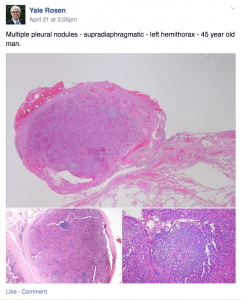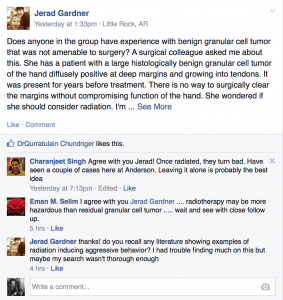Pathology 2.0 Update – 5 Years Later
In early 2009, I and many others were part of an organizing committee charged with putting together the program for CAP Futurescape and what later became known as Futurescape of Pathology. The idea for this meeting, was largely a CAP Foundation supported event that would include a weekend of short sessions on where pathology was going. The latest trends, business models, technologies and opportunities for pathologists. The program the prior year included a Wall Street perspective on pathology and laboratory medicine, new technologies, a speaker from Nighthawk Radiology asking if this was a model for pathology and more.
The following year we were looking to top the prior program and needed some ideas. On one conference call I suggested someone talk about “Pathology 2.0” which was followed by a collective silence on the call followed by a question directed at me by one of the other organizers – “What the hell is Pathology 2.0?” I responded I didn’t have the slightest idea but it sounded cool and should be included in a high level discussion on the future of pathology.
In reality I think I had an idea about what I was thinking of when the term left my lips which was fortunate since the committee agreed they thought it sounded important as well and I should give the talk.
The point was – someday the day was going to come where pathologists would use Web 2.0 tools (whether this really represented the next-generation of web tools or people figured how to use the web differently and the tools always existed) for purposes of clinical care.
Would pathologists harness the collective intelligence of the web in their daily practice? If so, how? How could our content be uploaded, shared and commented upon? And the usual questions – would the information be accurate, useful and be able to be applied with sound clinical business practices.
In 2009, Facebook and Twitter were still in their infancy but growing significantly on a daily basis. Google+, Instagram, Pininterest and many other social media services were yet to come to market or were a shell of what they are today.
Today, although I think this has been happening for some time, pathologists are part of a global social media community through sites such as Facebook, sharing cases, ideas, opinions and commentary.
There are now several groups on Facebook, for example, where group members (some are “open” to all while others are “closed” and require approval) can post cases, share ideas, exchange opinions, offer suggestions about work-up or address users questions about clinical questions posed to them by their clinical colleagues.
Of course this will be really interesting when you can share whole slide images on social media. And aggregate huge amounts of data from a worldwide pool of content providers, opinion seekers and respondents.
Pathology 2.0 is here!
Dr. Jerad Gardner, assistant professor and associate director of dermatopathology fellowship at the University of Arkansas has been on the forefront of the use of social media in pathology, as a superuser, contributor and speaker on the topic at many regional and national conferences.
For pathologists and others looking to use easily accessible and usually free applications to share information check out his excellent Wiki on Social Media Guide for Pathologists and check out some of the groups and answers to common concerns and questions regarding the use of social media.



































